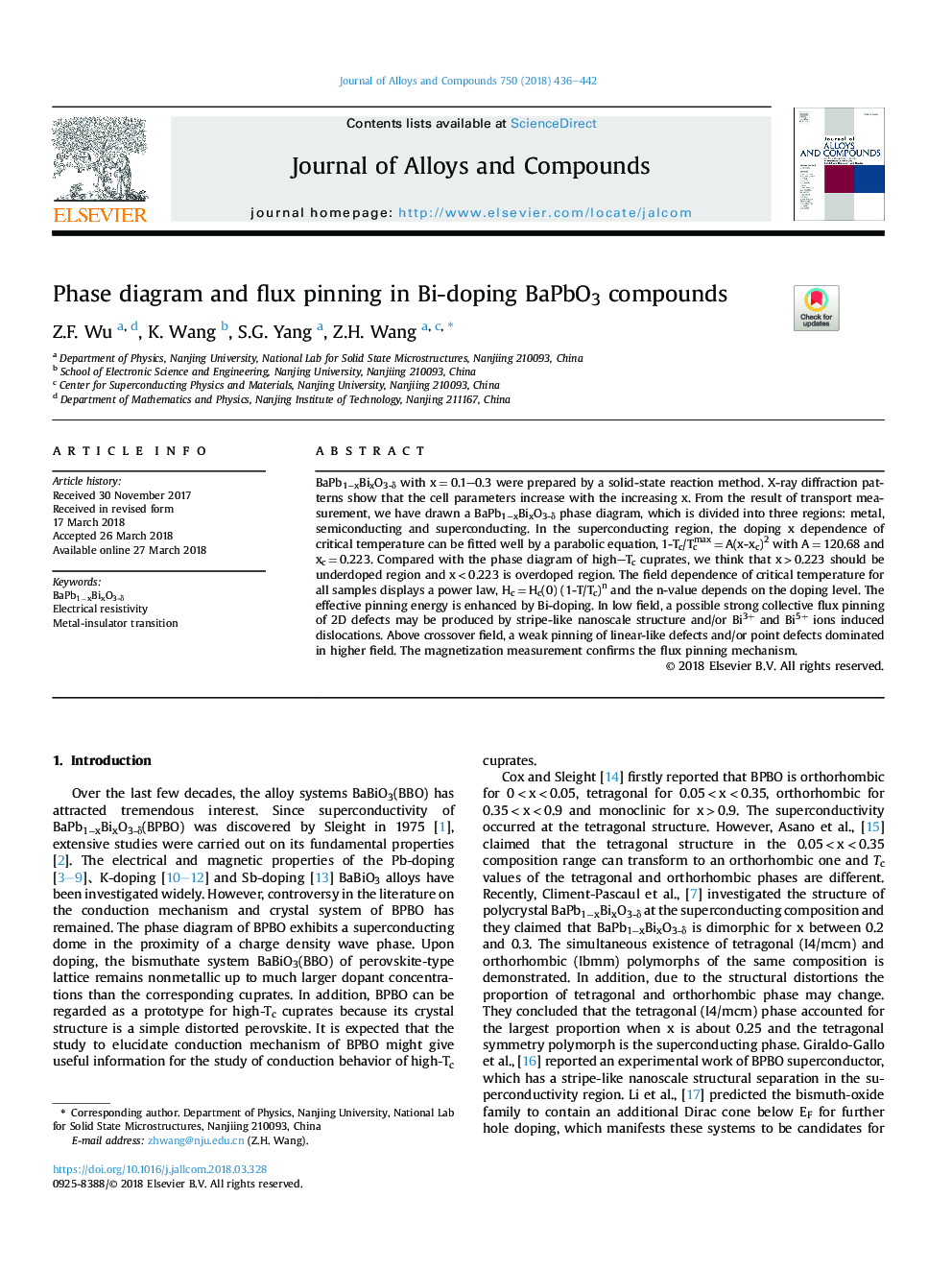| Article ID | Journal | Published Year | Pages | File Type |
|---|---|---|---|---|
| 7991852 | Journal of Alloys and Compounds | 2018 | 7 Pages |
Abstract
BaPb1âxBixO3-δ with xâ¯=â¯0.1-0.3 were prepared by a solid-state reaction method. X-ray diffraction patterns show that the cell parameters increase with the increasing x. From the result of transport measurement, we have drawn a BaPb1âxBixO3-δ phase diagram, which is divided into three regions: metal, semiconducting and superconducting. In the superconducting region, the doping x dependence of critical temperature can be fitted well by a parabolic equation, 1-Tc/Tcmaxâ¯=â¯A(x-xc)2 with Aâ¯=â¯120.68 and xcâ¯=â¯0.223. Compared with the phase diagram of high-Tc cuprates, we think that xâ¯>â¯0.223 should be underdoped region and xâ¯<â¯0.223 is overdoped region. The field dependence of critical temperature for all samples displays a power law, Hcâ¯=â¯Hc(0) (1-T/Tc)n and the n-value depends on the doping level. The effective pinning energy is enhanced by Bi-doping. In low field, a possible strong collective flux pinning of 2D defects may be produced by stripe-like nanoscale structure and/or Bi3+ and Bi5+ ions induced dislocations. Above crossover field, a weak pinning of linear-like defects and/or point defects dominated in higher field. The magnetization measurement confirms the flux pinning mechanism.
Related Topics
Physical Sciences and Engineering
Materials Science
Metals and Alloys
Authors
Z.F. Wu, K. Wang, S.G. Yang, Z.H. Wang,
